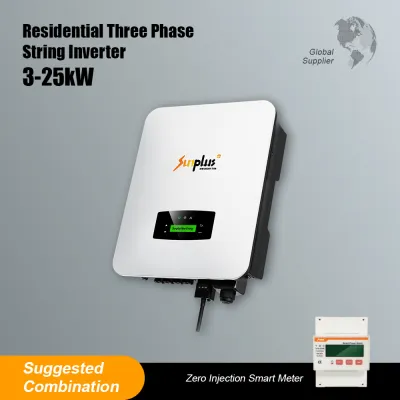What are the benefits of string inverters?
String inverters are key components in solar PV systems, responsible for converting the direct current (DC) produced by solar panels into alternating current (AC) for immediate use or export to the grid. They enable efficient utilization of solar power and contribute to the growth of renewable energy installations worldwide.
The Role of String Inverters
String inverters perform crucial functions in solar PV systems:
DC to AC Conversion: The primary function of a string inverter is to convert the DC electricity generated by solar panels into AC electricity, which is compatible with standard electrical appliances and can be used within a building or exported to the grid.
Maximum Power Point Tracking (MPPT): String inverters incorporate MPPT technology to ensure the optimal conversion of solar power. MPPT algorithms track the maximum power output of the solar panels by adjusting the voltage and current to match the panel's operating characteristics, maximizing energy yield.
Monitoring and Data Collection: Many string inverters feature built-in monitoring systems that collect real-time data on the performance of the solar PV system. This information helps users monitor energy production, identify potential issues, and optimize the system's overall efficiency.
How String Inverters Work
Sunplus String inverters convert solar power through a series of steps:
Solar panels capture sunlight and generate DC electricity.
The DC power flows through strings of solar panels connected in series.
The string inverter receives the DC power from multiple strings and converts it into AC power.
The AC power is either consumed locally within the building or exported to the electrical grid for use by other consumers.
Benefits of String Inverters
High Efficiency Conversion
String inverters are known for their high conversion efficiency, ensuring minimal energy losses during the DC to AC conversion process. High-efficiency inverters maximize the electricity yield of solar panels, resulting in improved overall system performance.
Cost-Effective Solution
String inverters are a cost-effective choice for solar PV systems. They generally have a lower upfront cost compared to other types of inverters, making them more accessible to residential and commercial users. Additionally, their straightforward installation and maintenance requirements contribute to cost savings.
Modular Design
String inverters typically have a modular design, allowing for easy scalability and expansion of the solar PV system. Additional inverters can be added as needed, accommodating the growing energy demands of residential or commercial installations.
Applications of String Inverters
String inverters are widely used in various solar power applications, including:
Residential Sector
In residential solar PV systems, commercial string inverters are commonly employed due to their affordability and compatibility with smaller-scale installations. They provide efficient power conversion and enable homeowners to reduce their reliance on the grid while enjoying the benefits of solar energy.
Commercial Sector
String inverters are prevalent in commercial solar installations, such as office buildings, shopping centers, and warehouses. They offer a cost-effective solution for medium-sized systems, allowing businesses to offset their electricity consumption and reduce operational costs.
Utility-Scale Solar Power Plants
String inverters find applications in utility-scale solar power plants, where large arrays of solar panels generate massive amounts of electricity. By integrating multiple string inverters, these plants can efficiently convert and distribute solar power to the electrical grid.

评论
发表评论